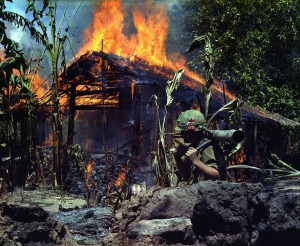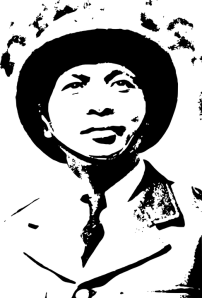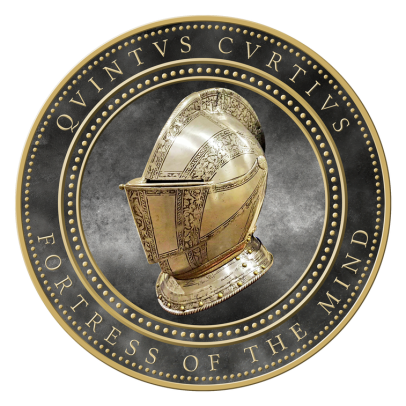
Vo Nguyen Giap (1911-2013) was the architect of the Vietnamese victory in the “Second Indo-China War” (called in the United States the “Vietnam War”), which took place from 1960 to 1975. He must also be credited with winning the “First Indo-China War,” which was waged against the French from 1946 to 1954. He proved to be a master of both conventional and guerrilla tactics, and displayed an incredible single-mindedness and foresight in pursuing his objectives to ultimate victory.
By any objective measure, he must be counted among the greatest generals of the twentieth century. When we consider the length of time he conducted operations, how much he accomplished with so little assistance, and his ruthless implementation of insurgent doctrine, we cannot help but amazed at his accomplishments.
He did not come from a military background. Indeed, he was almost entirely self-taught in military affairs, and perhaps it was this freedom from the straight-jacket of staff colleges and military academies that enabled him to think differently from his contemporaries. He was motivated and disciplined, and that was enough.
His early life experiences had burned a lasting hatred in his breast against colonialism and its symbols: while still a child, both his nationalist father and his sister died as a result of imprisonment by the French colonial authorities. He tried to secure a career as an attorney but, failing the examinations, he had to settle for teaching history. In the turbulence of post-World War southeast Asia, he rose to prominence in the Vietnamese Communist Party, which soon began to agitate for an independent, unified Vietnamese state.
He built the Vietnamese Army from basically nothing. His victory over the French at Dien Bien Phu is well-known, as is his prosecution of the war against the Americans to a successful conclusion in 1975. These details need not detain us here.

Giap did not often discuss his strategy or tactics; and when he did, he was in the habit of using obfuscating jargon or communist platitudes that concealed more than they revealed. Some of this was protective coloration–necessary in his environment of power politics–and some of it due to cultural tendencies towards concealment. Nevertheless, if we look closely at his words, we may discern the outlines of a profound and flexible military philosophy.
The quotations below are taken from a long article Giap wrote in 1975. Co-authored by his aide General Van Tien Dung, it appeared in the newspapers Nhan Dan and Quan Doi Nhan in June and July of 1975, under the title “Great Victory Of the Spring 1975 General Offensive and Uprising.” The article was translated into English in the same year, and has been published in booklet form several times since then. I have distilled the main points of the article, and present them here.
Pick The Right Strategy
We correctly assessed the worth of the US and [its] puppets, as we saw the fatal weaknesses of the stooge regime of the US in South Vietnam, and of the puppet army organized and equipped by the US, as well as the ability of the US to react. The Saigon puppet administration had an army of more than one million men with very modern equipment, and also a vast network of coercive machinery from the center down to the grassroots. However…the puppet army and administration also had very fundamental weaknesses in all fields…
A right strategic decision is the prime condition for winning victory. Once we have taken the right decision, the decisive question is to organize the realization of this decision in a way suited to the practical situation in each locality and at a given time on the battlefront.
Know Your Capabilities, And Those Of The Enemy
We also made a correct appraisal of our own capabilities, of the capabilities of our army, our people and our entire country…Never before had the correlation of forces between ourselves and the enemy been so favorable to us.
Concentrate Forces Towards An Objective
The law governing revolutionary war in our country requires that we become stronger as we fight, and take our offensive from a small one to a big one, from a local offensive to a general one, so as to conclude the war victoriously…thanks to this, we were able to concentrate a big force without precedent in the history of revolutionary war in our country, a force that enabled us to overpower the enemy during the historic [final] campaign.
Handle The Space Factor
The war machine of the enemy was deployed over a vast territory covering the while of South Vietnam, and was an organic whole…We correctly determined the main direction of the general offensive and uprising. We made the decision to use big forces to secure a dominant position and strike the decisive blow at Saigon, the last stronghold of the enemy.
Striking the final decisive blow at the “capital city,” the nerve center of the enemy, in order to win the war had always been a salient feature of the military art of our ancestors in their wars of liberation.
Ly Bon struck at Long Bien [in 544 A.D.], Phung Hung stormed Dai La [in 791], Nguyen Hue swept into Thang Long [in 1789], to win complete victory over the foreign invaders…
Choose The Right Time To Attack
To choose the right time to deliver the decisive blow is a major problem of the art of insurrection, as well as the art of war…That is why one must attack when the enemy is weak and exposed. This is the art of handling the time factor in war.
Mobility And Deployment Of Forces
If we can ensure high mobility, even a small force may generate a great strength and a great force may create a still greater strength…In order to gain time, the leadership and the command must have great initiative, resolve and daring, be certain of victory, and the action of the army must be rapid, timely, flexible, and creative.
Choose The Right Form Of Combat
In any war, after having concentrated large and powerful forces in the right direction and at the right time, we must also solve an equally important question, which is to choose and make full use of the most appropriate form of combat. Only by doing so can we create the necessary strength on the battlefield to win victory.
Catch The Enemy By Surprise
Surprise is a very important factor in war. In many cases it has a decisive effect upon the success or failure of a battle. To use the surprise factor to defeat the enemy is a major problem in military art. This is the art of catching the enemy by surprise as to the direction, targets and time of attack, the forces fielded and the forms of combat used by our side.
These, then are the major points of Giap’s stated military doctrine. Like all doctrine, the proof of its worth lies in the implementation. Few would argue that Giap’s strategy worked, and worked brilliantly.
Within the space of thirty years, he had engineered the defeats of two sophisticated Western powers, France and the United States. When a man of Giap’s caliber speaks on strategy and tactics, we would do well to listen.
For more information about this and related ideas, see my books Thirty-Seven and Pathways.


You must be logged in to post a comment.